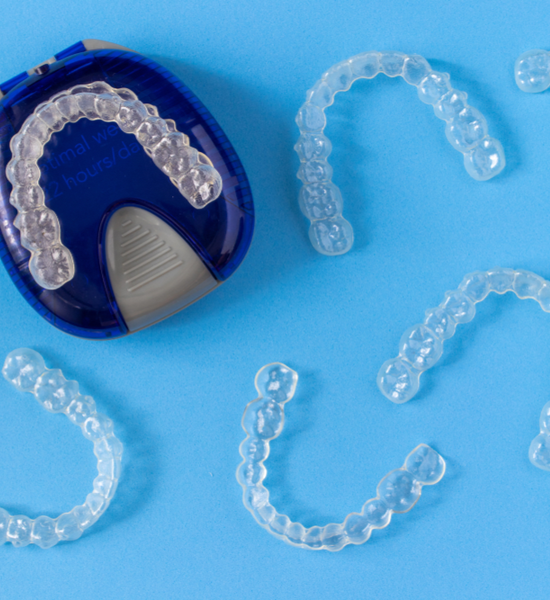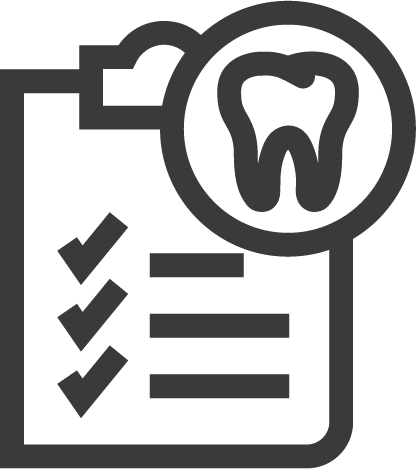Orthodontics in Lake In The Hills IL | Aristo Dental 2
Schedule Appointment
By submitting this form, you are agreeing to our privacy policy
Which are the Best braces for you?
At Aristo Dental we provide traditional braces (metal), Invisalign Clear Braces, and Sure Smile Clear Aligners. There are many different advantages to each of these types of treatment options and we believe it is best to make available all that technology offers for the best possible outcome.
Traditional Metal Braces
Braces can correct crooked and crowded teeth, a misaligned bite, and jaw problems. Braces also eliminate problems you may have with eating, speaking properly, or with keeping your teeth clean. With advancements in dental technology, traditional braces are now sleeker, smaller, and more comfortable.
Traditional braces consist of standard metal brackets that are placed on your teeth with an adhesive and connected by wire. They require periodic tightening every 4-6 weeks so steady pressure can gradually straighten your teeth and align your jaw. While metal braces brackets are still the most common orthodontic option, there are various other treatment options available. Read below to learn more about traditional braces and how you can customize them to fit your lifestyle.

Invisalign Clear Braces
Invisalign® is one of our most popular treatment options because it allows you to discreetly straighten your teeth. The appliance is a clear plastic that is practically invisible. Invisalign® is the perfect option for adults because it offers a way to get a beautiful and healthy smile without having to worry about it being noticeable.
Invisalign has come a long way since they were first introduced as a way of straightening misaligned teeth. No need for giant bulky headgear and a mouthful of painful wires, today’s Invisalign retainers are light, comfortable, and nearly invisible. As a result of both the advancements in smile technology and a great emphasis on cosmetic dentistry, Invisalign for adults and teens has become a popular choice for fixing a crooked or gap in your smile.
A great solution for teens, adults, and seniors as well. Contact us today for a free consultation.
SureSmile Clear Aligners
Clear aligners are an effective alternative to traditional braces because they use a system of clear, removable trays used to straighten teeth. Each aligner is custom-made to fit over your teeth and is designed to gradually move teeth into their proper position. Using clear aligners for orthodontic treatment is not for everyone. The best way to find out if clear aligners are the right option for you is to schedule a consultation with Aristo Dental today.

Average treatment time with SureSmile is 30% or more faster than conventional braces.*
(*Based on a comparison of 1,849 patients treated conventionally and 4,376 patients treated with SureSmile.)
Through the use of SureSmile technology, your dentist can offer you a “braces experience” that provides:
- Shorter treatment times
- Fewer office visits
- Less overall discomfort
- High-quality results
Our technology-driven orthodontic process offers several important benefits that make the whole “braces experience” much easier for patients than conventional orthodontics!
Make Your Appointment Today at Aristo Dental Lake in the Hills
Start on your way to a better smile by calling 847-854-0525 today for an appointment. We’re also happy to answer any questions you may have – our team at Aristo Dental 2 in Lake in the Hills, IL is here to make your dental experience pleasant, affordable, and beautifully effective.
Importance of Orthodontic Dentistry
Orthodontics forms an integral part of pediatric and regular dentistry. Orthodontic treatments promote proper oral hygiene for healthy teeth and a beautiful smile. By straightening crowded teeth or aligning your open bite, orthodontics can dramatically enhance your appearance. This boosts your confidence and could have a profound impact on your quality of life.
This branch of dentistry is also immensely beneficial for preserving or improving the strength of your teeth and jaws. Misaligned teeth are hard to brush and floss, preventing proper oral hygiene and increasing the proclivity for dental deterioration. Orthodontic dentistry straightens the teeth, allowing you to brush hard-to-reach areas and maintain strong, healthy teeth.
Orthodontic treatments are also important for permanently addressing symptoms of malocclusion complications. These symptoms include headaches, difficulty chewing, and jaw pain. Orthodontia aligns your teeth, eliminating these symptoms and improving your life quality. By alleviating these symptoms you can focus on achieving your goals and living a meaningful life.
When Should Your Orthodontic Treatment Start?
Your orthodontic treatment should begin as soon as you notice signs of malocclusions or related symptoms like jaw pain and headaches. The earlier you resolve these issues, the better for your dental and overall health.
Most conditions that dentists resolve with orthodontic treatments only get worse and could lead to other complications. Dental decay and gum disease from poor oral hygiene could easily spiral out of control and cost you a bundle to address. You’re better off investing in orthodontic treatments and saving a considerable amount in future dental expenses.
If you notice signs of misaligned teeth in your child, you should arrange for orthodontic treatment when they’re between the ages of 8 and 14. This is the most ideal time for treatments since the teeth and head are conducive to straightening and jaws are still growing, allowing orthodontic devices to guide the teeth to their correct positions and alignments.
What Is the Orthodontic Treatment Process Like?

Initial Consultation and Treatment Planning
Orthodontic treatments start with consultation with a licensed orthodontist or dentist. It involves reviewing your medical information and tests like X-rays and TMJ tests that determine your suitability for the treatment. The dentist will then create a custom treatment plan for your treatment that outlines the procedure, timeline and other crucial details.

Preparation
Procedures
A fair deal of preparation is necessary before installing the orthodontic device. Preparation typically involves scaling and cleaning the teeth to remove plaque, tartar, and other debris. Some patients might require tooth extractions (typically wisdom teeth) to make room for the orthodontic device.

Placing the
Orthodontic Device
After application, the dentist will place the orthodontic device on your teeth. Braces are the most common type of orthodontic device. They consist of metal brackets with archwires that pass through them. The dentist will glue the brackets on your teeth before passing the archwires through them. And tightening them.

Adjustments and
Post-Treatment Care
The dentist will make regular adjustments to your orthodontic device to ensure a tight fit and the gradual straightening of your teeth. Adjustments don’t require the removal of the orthodontic device. In most cases, it involves tightening screws or replacing rubber bands in the braces or orthodontic device.
